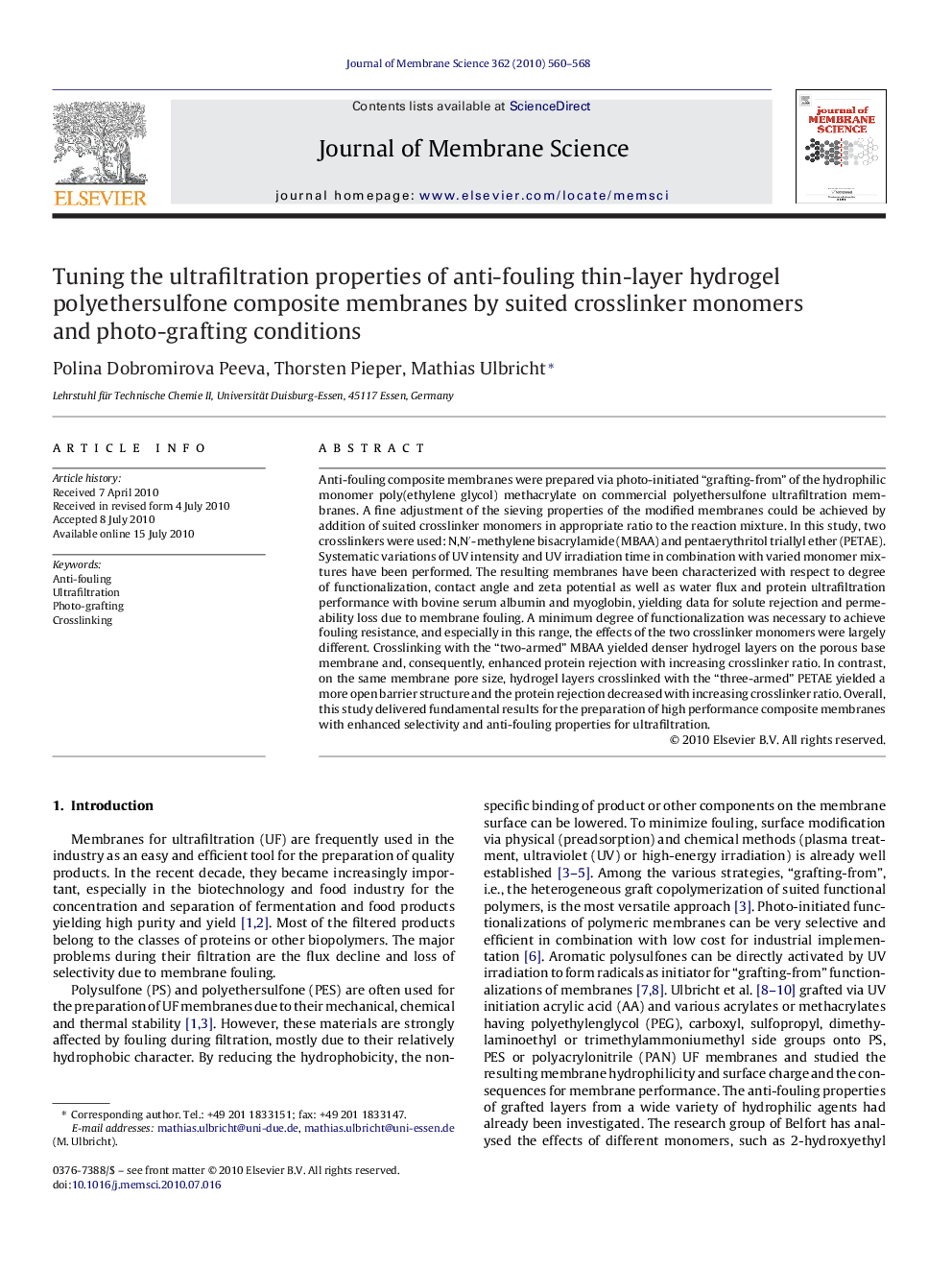| Article ID | Journal | Published Year | Pages | File Type |
|---|---|---|---|---|
| 636281 | Journal of Membrane Science | 2010 | 9 Pages |
Anti-fouling composite membranes were prepared via photo-initiated “grafting-from” of the hydrophilic monomer poly(ethylene glycol) methacrylate on commercial polyethersulfone ultrafiltration membranes. A fine adjustment of the sieving properties of the modified membranes could be achieved by addition of suited crosslinker monomers in appropriate ratio to the reaction mixture. In this study, two crosslinkers were used: N,N′-methylene bisacrylamide (MBAA) and pentaerythritol triallyl ether (PETAE). Systematic variations of UV intensity and UV irradiation time in combination with varied monomer mixtures have been performed. The resulting membranes have been characterized with respect to degree of functionalization, contact angle and zeta potential as well as water flux and protein ultrafiltration performance with bovine serum albumin and myoglobin, yielding data for solute rejection and permeability loss due to membrane fouling. A minimum degree of functionalization was necessary to achieve fouling resistance, and especially in this range, the effects of the two crosslinker monomers were largely different. Crosslinking with the “two-armed” MBAA yielded denser hydrogel layers on the porous base membrane and, consequently, enhanced protein rejection with increasing crosslinker ratio. In contrast, on the same membrane pore size, hydrogel layers crosslinked with the “three-armed” PETAE yielded a more open barrier structure and the protein rejection decreased with increasing crosslinker ratio. Overall, this study delivered fundamental results for the preparation of high performance composite membranes with enhanced selectivity and anti-fouling properties for ultrafiltration.
Research highlights▶ Anti-fouling thin-film hydrogel composite membranes for ultrafiltration have been prepared by tailored photo-initiated surface grafting of a PEG-containing methacrylate. ▶ The ultrafiltration sieving properties of the composite membranes have been tuned by choice of bi- or trifunctional crosslinker monomers and their content in the reaction mixture for grafting functionalization.
